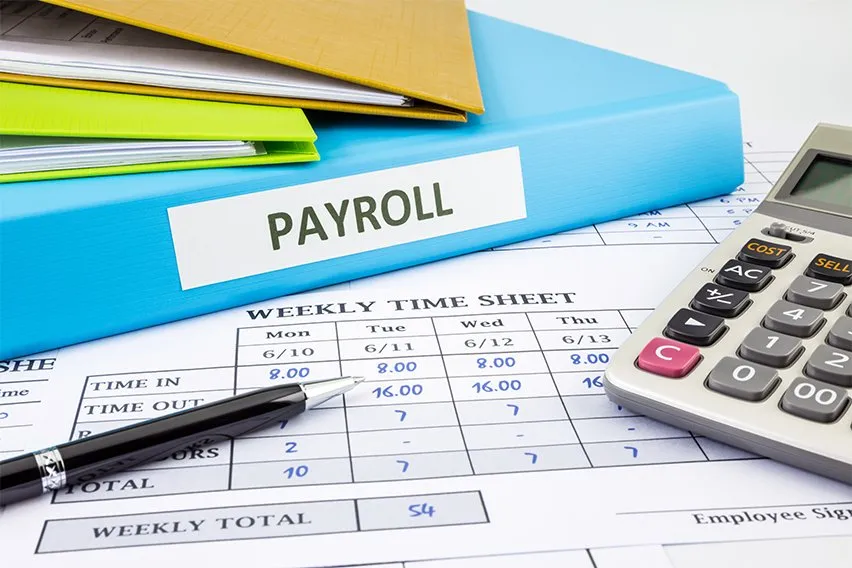An Extensive Guide to Payroll Forms

As a small business owner, you have a lot of tax reporting responsibilities. It’s complicated enough that many owners rely on a tax checklist to get all their forms filled out.
Payroll taxes in particular can eat up a lot of your time. Not only do you have to fill out multiple forms, but the exact forms are different from business to business. You’ll have different reporting requirements depending on what you do, how you pay your employees, and how big you are.
Here’s a quick overview of the most commonly-used payroll tax forms in the US. We’ll look at what each one is for, and when it’s filed. Let’s begin!
Here’s What We’ll Cover:
Form W-2
If you’ve ever held a job as a regular employee, you’ve gotten a W-2 form. It’s the form employees use at the end of the year to pay their personal income tax. Now that you’re a business owner, you’ll need to fill out the W-2 for your employees.
Fill out each employee’s W-2 form with the necessary information. Some payroll software can do this for you automatically. Print three copies of each W-2: one for the employee, one for the Social Security Administration (SSA), and a third for your records.
Contractors and freelancers do not receive a form W-2. For those individuals, you would fill out a form 1099 instead.
You must submit W-2 forms annually, no later than January 31st.

Form W-3
Form W-3 is a summary of all your form W-2 records. It includes totals for tax withholdings and Social Security wages. It also includes Medicare wages, and other adjustments. The numbers on your W-3 should be exactly the sum of the corresponding W-2 numbers.
You must submit form W-3 to the SSA annually, along with your W-2 forms.
Form W-4
Form W-4 determines an employee’s approximate tax liability. It asks them for information like their Social Security number, name, address, and marital status. Employees can also list dependents and make other adjustments.
All new employees must fill out their own W-4 form. You must retain those forms for your records.
Form 940
IRS form 940 is the Employer’s Annual Federal Unemployment (FUTA) Tax Return. Employers pay the Federal Unemployment Tax directly. It is not withheld from employee wages.
That said, not all organizations need to file form 940. For example, most nonprofits are exempt. You also won’t owe FUTA taxes if none of your employees earned more than $1,500.
Form 940 is due annually by January 31st. When you return it, don’t forget to submit any outstanding FUTA payments. That way, you’ll avoid any potential penalties.
Form 941 and Related
Form 941 is the Employer’s Quarterly Federal Tax Return. This is your main payroll tax withholding document, which reports all data on employee taxes. This information includes:
- Total employee wages
- Tips
- Federal income tax withheld
- FICA taxes withheld
- Adjustments to Social Security and Medicare, insurance, sick pay, and personal time
Most small businesses must file a form 941, and must file it quarterly. That said, there are a few exceptions. To begin with, some very small businesses are allowed to file their taxes annually. If your business qualifies, the IRS will notify you in writing. In that case, you would use form 944 instead. It contains all the same information as form 941, but you file it annually.
In addition, certain business types use different forms. A good example of this if you employ farm workers or seasonal labor. In that case, you’d file form 943 instead.
Finally, you don’t have to file a form 941 if you’ve filed a final return with the IRS.
If you’ve made any errors on your form 941, you can make adjustments. To do that, you need to file form 941-X.

Forms 1095-B and 1094-B
You’ll also need to report any self-insured health coverage you offer your employees. This won’t be an issue for most small business owners. However, if you’re running a larger business, you might be self-insured.
In that case, you’ll need to file form 1095-B. This form provides basic information on the health insurance plan. You’ll need to fill out a separate form for each employee. Print out three copies: one each for the employee, the IRS, and your tax records.
You’ll also need to submit a copy of form 1094-B. Just as a W-3 is a summary of all W-2 forms, a 1094-B summarizes all of your 1095-B forms. The 1094-B does not go to your employees, only to the IRS. You must submit both forms annually.
Key Takeaways
These are the most common payroll forms that businesses will need to submit. There may be additional forms, depending on your line of business. You’ll also need to pay your regular quarterly taxes!
RELATED ARTICLES

 4 Best Payroll App Selections for Small Business
4 Best Payroll App Selections for Small Business Top 5 Online Payment Solutions
Top 5 Online Payment Solutions ACH vs Wire: Difference Between ACH and Wire Transfer
ACH vs Wire: Difference Between ACH and Wire Transfer What Is PayPal Cash Card?
What Is PayPal Cash Card? How To Send an Invoice on Paypal in 8 Simple Steps (2025)
How To Send an Invoice on Paypal in 8 Simple Steps (2025) Difference Between PayPal Personal vs Business Account
Difference Between PayPal Personal vs Business Account